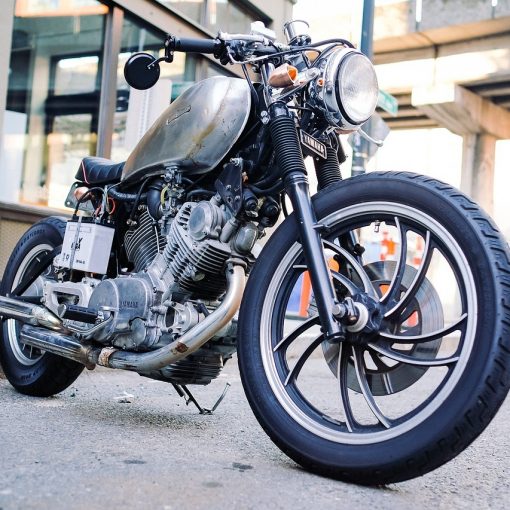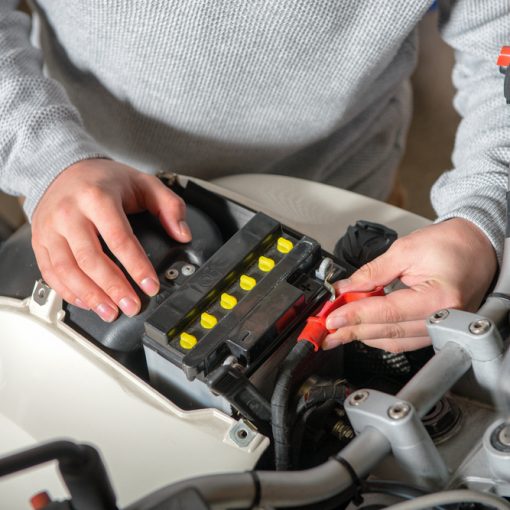Riding a motorcycle is both an exhilarating and adventurous experience. However, it can be extremely dangerous if you don’t have enough liability coverage. Having the right amount of motorcycle insurance is the best way to protect yourself from financial liability if you cause an accident, injure someone, or damage property. It's important to understand how motorcycle insurance works, and how to get insurance that covers what you need without getting ripped off.
Why Motorcycle Insurance Is Important
It’s essential for all motorcycle riders to have the liability insurance coverage. This precaution ensures that you can pay for property damages and bodily injuries if you cause an accident. You might also want to purchase life insurance to fully protect yourself.
If sued by a driver, passenger, or other motorcycle riders, you might not know where to begin. Luckily, there are lots of insurance policies that can help you to meet the various costs comfortably.
In case you’re arrested without the mandatory insurance, you could face court appearances, fines, and tickets. In addition to license suspension, you could also face severe repercussions if involved in an accident while operating an uninsured bike.
Why Motorcycles Are Prone to Accidents
A motorcycle is much more dangerous to operate than a vehicle since it’s faster and more maneuverable. Motorcycle riders are 28 times more likely to die in an accident than passengers in a car. Due to their small size, they are quite hard to see on a busy road.
Since they operate on two wheels, a distraction or moment of inattention is highly likely to lead to an accident.
Their low stability exposes riders to even more danger once they encounter debris, gravel, uneven pavements, or slippery road conditions. Unfortunately, severe injuries or even deaths are always inevitable once a motorcycle crashes. The riders are at risk of sustaining fractures and head injuries.
What to Consider Before Buying Motorcycle Insurance
Once stolen, motorcycles are easy to disassemble, rebuild, and sell. So, it’s critical to insure your bike against theft. If you own a powerful bike, the risk of injury is quite high. The risk is even higher if you plan to race, either for fun or competitively.
Due to the nature of risks involved, hospitalization is always likely if an accident occurs and that’s why you need a life insurance policy. Talk to your insurance company about the policies that you need to cater for medical expenses.
For this reason, it’s essential to invest in medical payments insurance. Ensure that the policy covers the doctor’s consultation, hospitalization, medical equipment, and prescription drugs. MRI and CT scans are also quite expensive.
Related Content:
- What type of motorcycle insurance should I get?
- How to make motorcycle insurance cheaper
- Average motorcycle insurance cost
- Do you need motorcycle insurance
This is how motorcycle insurance works:
1. Motorcycle Vs. Car Insurance
The third party policy is mandatory in both car insurance and motorcycle insurance. However, in both instances, it’s hardly enough to cover the risks involved. Since this policy offers limited coverage for loss towards the third party, you might need to protect yourself with personal accident insurance.
Comprehensive car insurance pays for repair or replacement of your bike. By the same token, comprehensive car insurance pays for damages to the car, theft, and legal liability. You have the opportunity to include some add-ons, such as property damage and personal accident cover.
Whether you own a car or bike, comprehensive insurance cover can give you peace of mind from lawsuits brought against you and financial protection if liable for property damage. You’ll get financial assistance if your bike is written off during an accident.
The comprehensive insurance cover protects your bike and a third-party liability to give you whole coverage against all the odds. Whether you’re looking for bike or car insurance, you need to do your homework, compare several options, and find a reputable insurer.
2. What Does Motorcycle Insurance Cover?
A motorcycle policy covers the total cost of injuries to others and damage to their motorcycles if you’re at fault. It also covers your motorcycle against unexpected events, such as theft, damaging weather, and fire. Collision coverage pays to repair your motorcycle if you hit an object or another vehicle.
Uninsured coverage is an optional policy that protects your finances if injured by an at-fault rider that doesn’t have sufficient insurance to cover your losses. In most states, every motorcycle rider should have both liability insurance cover and bodily injury coverage. These policies cover any injuries and damage they might cause to third parties while operating their motorcycles.
3. How Much Motorcycle Insurance Should I Get?
Motorcycles are dangerous machines by nature. Whether you use your bike to commute or run errands, you need the peace of mind that comes with being fully insured, come rain or sunshine. Unfortunately, motorcycle accidents cause severe injuries.
Even if you’re compliant with the legal requirements, you’re not out of the woods yet.
Besides investing in the comprehensive insurance policy, you still need the medical cover to be on the safe side. It’s almost impossible to pay legal fees and cater for repairs when hospitalized. The legal expenses cover helps you when you require legal assistance while the underinsured policy helps you if the other party doesn’t have sufficient coverage.
4. Who Sells Motorcycle Insurance?
Most of the agents that provide car insurance also offer motorcycle insurance services. Insurance agents sell insurance company’s products to motorcycle owners for a commission.
Besides representing the mother company in the transaction, they help you to choose the right policies to buy depending on your needs. While it’s not necessarily cheaper to buy insurance from an agent, the agent can help you to find the best coverage cost-effectively.
Engaging a knowledgeable agent is essential in motorcycle and auto insurance. With an agent, you’ll get professional risk management advice to help reduce your exposure and protect you and your bike from incidents.
Such advice can help to lower the cost of insurance without sacrificing the liability coverage. For example, you might have to pay more if you live in a region where the risk of theft is high. The agent will guide you on how to safeguard your bike and lower the risk considerably.
5. What Is the Average Cost of Motorcycle Insurance?
The average cost of bike liability insurance is $85 per year in the United States, but these rates vary depending on your specific location. Although motorcycle insurance is legally mandatory in almost every state, every rider has the liberty to invest in insurance add-ons that suit their requirements.
However, you’ll pay dearly if you have a more powerful bike. A 125cc bike is cheaper to insure compared to the one-liter bike. Besides causing more severe accidents, powerful bikes are costly to repair or replace.
You can also save on your insurance if you avoid modifying your bike. If you need a sidecar, you’ll have to insure it separately.
The costs can also vary depending on what your existing medical insurance covers. It’s possible to tabulate what your medical policy covers to avoid duplication or paying for more insurance than you need.
Related Content:
- Florida motorcycle insurance
- California motorcycle insurance
- Texas motorcycle insurance
- Michigan motorcycle insurance
6. Does It Cover Mopeds and Scooters?
Yes. Just like motorcycles, you must insure your scooter or moped before riding on US roads. Such insurance protects you from liability, especially if involved in an accident, injure someone, or damage property. Your insurance agent will guide you on the policies you need to provide sufficient compensation if your moped or scooter is lost, stolen, or vandalized.
A moped is any two-wheeled vehicle with a top speed of about 30 miles per hour and a 50 cc engine. Scooters also fall under the category, but it’s essential to confirm the definition and regulation in your state. Find out whether your liability insurance cover includes your scooter too.
Almost every insurance company covers mopeds and scooters under their conventional motorcycle policies. But to avoid frustration, confirm with your insurance agent since mopeds and scooters have different features and legal requirements.
In both bike and auto insurance, the secret is to ensure that you have the right amount of coverage before hitting the road. Find out how the state you live in characterizes the scooters and mopeds before determining your insurance requirements.
How to Get Motorcycle Insurance
The process of getting the right insurance policy for your bike starts with identifying the mandatory policies (third party) in your state. The next step entails finding a reputable insurance company that’s well-versed with the local regulations and policies. Not only will the insurance agents help you to understand the policies you need to stay safe, but their expertise can help you to get affordable insurance quotes.




